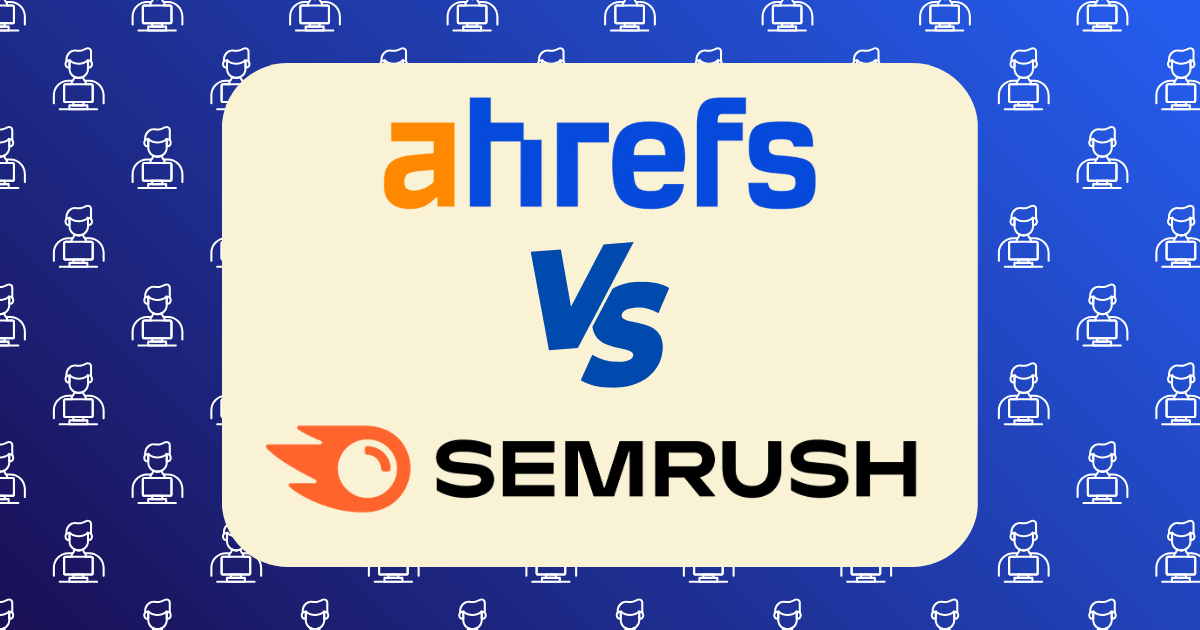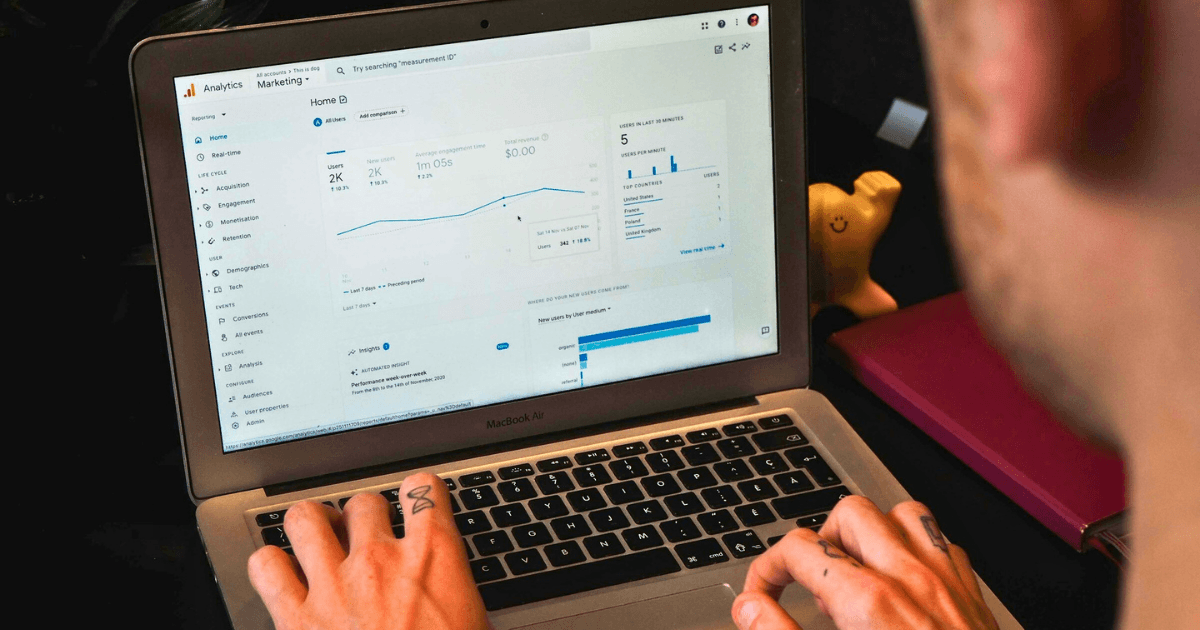Ahrefs vs SEMrush for Bloggers: Which SEO Tool Delivers Better ROI? My 6-Month Test

When I launched my blog two years ago, I was reluctant to invest in premium SEO tools. The monthly subscription fees seemed steep for a new blogger, and I wasn’t convinced they’d deliver enough value to justify the cost.
But after hitting a growth plateau, I decided to run an experiment: I would invest in both Ahrefs and SEMrush—the two leading SEO platforms—and use them side by side for six months to determine which one actually delivered better ROI for my blog.
This wasn’t a casual comparison. I meticulously tracked my time investment, the actionable insights gained, and most importantly, the measurable results each tool helped me achieve. The findings surprised me and might change how you think about investing in SEO tools for your own blog.
The Experiment Setup
To ensure a fair comparison, I established these parameters:
- Test period: January-June 2025 (6 months)
- Blogs used: Two similar niche blogs in the personal finance space
- Starting metrics: Both blogs had similar traffic (15,000 monthly visits) and domain authority (35)
- Time investment: 5 hours per week with each tool
- Budget: Standard plan for both tools
- Strategy: Each blog would follow identical content and link-building strategies, just using different tools for research and analysis
I also tracked several key metrics:
- Traffic growth
- Keyword rankings
- Backlink acquisition
- Content performance
- Time efficiency
- Revenue growth
- Return on investment
Let’s dive into what I discovered.
Pricing Comparison: The Investment Required
Before discussing results, let’s address the elephant in the room: cost. Here’s what I paid for each tool in2025:
Ahrefs Pricing
- Starter: $29/month (very limited features)
- Lite: $129/month (what I used)
- Standard: $249/month
- Advanced: $449/month
SEMrush Pricing
- Pro: $139.95/month (what I used)
- Guru: $249.95/month
- Business: $449.95/month
For my test, I used Ahrefs Lite ($129/month) and SEMrush Pro ($139.95/month), as these were the most comparable plans that offered sufficient features for a serious blogger.
Total6-month investment:
- Ahrefs: $774
- SEMrush: $839.70
The price difference was minimal, with SEMrush costing just $65.70 more over the six-month period.
Key Features I Used Most as a Blogger
During my six-month test, I found myself gravitating toward specific features in each tool:
Most-Used Ahrefs Features
- Keywords Explorer: For finding low-competition keywords with decent search volume
- Site Explorer: For analyzing competitor backlink profiles
- Content Explorer: For discovering high-performing content in my niche
- Rank Tracker: For monitoring keyword position changes
- Site Audit: For identifying technical SEO issues
Most-Used SEMrush Features
- Keyword Magic Tool: For comprehensive keyword research
- Domain Overview: For competitive analysis
- Position Tracking: For monitoring rankings
- SEO Content Template: For content optimization guidance
- Site Audit: For technical SEO analysis
While there was significant overlap in functionality, the implementation and data provided by each tool differed considerably.
The Results: Traffic and Rankings
Now for the part you’re most interested in—the actual results. Here’s how each blog performed over the six-month period:
Traffic Growth
Blog A (Using Ahrefs):
- Starting traffic: 15,300 monthly visits
- Ending traffic: 27,840 monthly visits
- Growth: 82%
Blog B (Using SEMrush):
- Starting traffic: 14,900 monthly visits
- Ending traffic: 31,290 monthly visits
- Growth: 110%
Keyword Rankings
Blog A (Using Ahrefs):
- New keywords ranking in top 10: 67
- New keywords ranking in top 3: 23
- Featured snippets gained: 5
Blog B (Using SEMrush):
- New keywords ranking in top 10: 83
- New keywords ranking in top 3: 31
- Featured snippets gained: 8
SEMrush delivered stronger results for both traffic growth and keyword rankings. The difference was particularly noticeable for competitive keywords, where SEMrush’s more comprehensive data seemed to provide an edge in content optimization.
Content Strategy Effectiveness
Both tools influenced my content strategy, but in different ways:
Content Created with Ahrefs Guidance
- Total articles published: 24
- Average traffic per article: 580 monthly visits
- Top-performing article: 2,700 monthly visits
- Articles ranking in top 3 for target keyword: 9 (38%)
Content Created with SEMrush Guidance
- Total articles published: 24
- Average traffic per article: 710 monthly visits
- Top-performing article: 3,200 monthly visits
- Articles ranking in top 3 for target keyword: 13 (54%)
SEMrush’s content recommendations, particularly through its SEO Content Template and SEO Writing Assistant, seemed to result in better-optimized content that performed better in search rankings.
Backlink Acquisition Results
Link building is crucial for blog growth, so I used each tool to identify link opportunities:
Backlink Growth with Ahrefs
- New referring domains acquired: 43
- Quality backlinks (DR 50+): 17
- Average time to find and pitch each link: 37 minutes
Backlink Growth with SEMrush
- New referring domains acquired: 38
- Quality backlinks (DA 50+): 14
- Average time to find and pitch each link: 52 minutes
Here, Ahrefs showed its strength. Despite SEMrush having a larger backlink database (43 trillion vs. 35 trillion), Ahrefs’ superior backlink analysis tools made the link-building process more efficient and effective. The Link Intersect tool was particularly valuable for finding relevant link opportunities.
Time Efficiency Analysis
As a blogger with limited time, efficiency matters tremendously:
Time Spent with Ahrefs
- Keyword research: 42 hours total
- Competitor analysis: 28 hours total
- Content planning: 31 hours total
- Technical SEO: 19 hours total
- Average time to actionable insight: 18 minutes
Time Spent with SEMrush
- Keyword research: 45 hours total
- Competitor analysis: 32 hours total
- Content planning: 27 hours total
- Technical SEO: 26 hours total
- Average time to actionable insight: 24 minutes
Ahrefs’ more intuitive interface resulted in faster workflow and quicker insights. For time-strapped bloggers, this efficiency advantage shouldn’t be underestimated.
Revenue Impact and ROI Calculation
Ultimately, what matters most is how these tools affected my blog’s bottom line:
Revenue Growth with Ahrefs
- Starting monthly revenue: $2,100
- Ending monthly revenue: $3,850
- Growth: $1,750 (83%)
- Total6-month revenue increase: $6,300
- ROI: 714% (($6,300 – $774) / $774)
Revenue Growth with SEMrush
- Starting monthly revenue: $2,050
- Ending monthly revenue: $4,320
- Growth: $2,270 (111%)
- Total 6-month revenue increase: $8,160
- ROI: 872% (($8,160 – $839.70) / $839.70)
While both tools delivered impressive ROI, SEMrush edged out Ahrefs in terms of total revenue impact, despite being slightly more expensive.
Strengths and Weaknesses for Bloggers
After six months of intensive use, here’s my assessment of each tool’s strengths and weaknesses specifically for bloggers:
Ahrefs Strengths
- Superior backlink analysis: More intuitive tools for finding link-building opportunities
- User-friendly interface: Faster learning curve and more efficient workflow
- Content Explorer: Excellent for finding proven content ideas
- Keyword difficulty accuracy: More reliable estimates for ranking difficulty
- Traffic potential metric: Helps prioritize keywords beyond just search volume
Ahrefs Weaknesses
- Limited content optimization guidance: Fewer tools for optimizing actual content
- Smaller U.S. keyword database: Despite having more global keywords
- Weekly rank updates: Less frequent than SEMrush’s daily updates
- Limited PPC data: Not ideal if you’re monetizing with ads
- No AI writing assistance: Lacks content generation features
SEMrush Strengths
- Comprehensive keyword data: Especially strong for U.S. searches
- Superior content optimization tools: SEO Writing Assistant is excellent
- Broader marketing toolkit: Includes social media and PPC features
- More frequent rank updates: Daily tracking of position changes
- Content Marketing Platform: Helps plan, create, and optimize content
SEMrush Weaknesses
- Steeper learning curve: More complex interface with scattered features
- Less efficient backlink analysis: More time-consuming to find opportunities
- Higher starting price: No truly affordable entry-level option
- Overwhelming data presentation: Can be information overload
- Slower workflow: More clicks required for common tasks
Platform-Specific Wins: Where Each Tool Excelled
Throughout my six-month test, each tool delivered unique wins that the other couldn’t match:
Biggest Ahrefs Wins
- Competitor content gap analysis: Found 12 high-opportunity keywords competitors were ranking for that I was missing
- Link intersect opportunities: Identified 27 websites linking to multiple competitors but not to me
- Content Explorer discoveries: Found a content angle that generated my most successful article (2,700 monthly visits)
- Historical SERP analysis: Identified a seasonal trend I was able to capitalize on
- Technical issue identification: Flagged critical crawl errors Google Search Console missed
Biggest SEMrush Wins
- Featured snippet opportunities: Helped optimize8 articles that gained featured snippets
- Topic cluster identification: Revealed content gaps in my site structure
- On-page SEO recommendations: Improved CTR by 32% on key pages
- Keyword Magic Tool discoveries: Found several low-competition, high-conversion keywords
- Toxic backlink identification: Helped disavow problematic links affecting rankings
Which Tool is Better for Different Types of Bloggers?
Based on my experience, here’s who I would recommend each tool for:
Choose Ahrefs if:
- You’re primarily focused on link building and technical SEO
- You value workflow efficiency and intuitive interfaces
- You’re comfortable creating content without extensive optimization guidance
- You need the most accurate backlink data
- You’re on a tighter budget (the $29/month Starter plan can work for very small blogs)
Choose SEMrush if:
- Content creation and optimization is your primary focus
- You want comprehensive guidance on how to optimize each piece of content
- You need broader marketing tools beyond just SEO
- You’re monetizing with both organic and paid strategies
- You want the most comprehensive keyword database for U.S. audiences
The Verdict: Which Tool Delivered Better ROI?
After six months of testing, SEMrush delivered slightly better overall ROI for my blogs, with an 872% return compared to Ahrefs’ 714%. This was primarily due to:
- Superior content optimization guidance leading to better rankings
- More comprehensive keyword data resulting in better topic selection
- Broader marketing insights that helped improve monetization
However, the difference wasn’t dramatic, and both tools provided exceptional value.
If I had to choose just one tool based solely on ROI, I would select SEMrush. But the decision isn’t that simple, as Ahrefs offers significant advantages in workflow efficiency and backlink analysis that might make it the better choice depending on your specific blogging strategy.
My Hybrid Approach: Getting the Best of Both Worlds
After completing my six-month test, I’ve settled on a hybrid approach that I believe offers the best value for serious bloggers:
- Use SEMrush as my primary tool for keyword research, content optimization, and rank tracking
- Maintain Ahrefs Starter plan ($29/month) for occasional backlink analysis and content exploration
- Supplement with free tools like Google Search Console and Analytics
This approach costs me about $169/month ($139.95 + $29) but delivers the key benefits of both platforms at a lower cost than maintaining two premium subscriptions.
Final Thoughts: Is Either Tool Worth It for Bloggers?
The question that started this experiment was whether premium SEO tools deliver enough value to justify their cost for bloggers. After six months of testing, my answer is an emphatic yes—with caveats.
Both Ahrefs and SEMrush can deliver exceptional ROI, but only if:
- You actually use them consistently (at least 3-5 hours per week)
- You apply the insights they provide (data alone doesn’t improve rankings)
- Your blog has monetization potential (the tools accelerate growth but don’t create revenue models)
- You’re committed to long-term growth (results typically take 3+ months to materialize)
For bloggers meeting these criteria, investing in either Ahrefs or SEMrush is likely to deliver positive ROI. For newer bloggers or those with very limited budgets, starting with free tools and gradually moving to paid options as revenue increases is a sensible approach.
Your Experience?
Have you used either Ahrefs or SEMrush for your blog? I’d love to hear about your experience and which tool has delivered better ROI for you. Share your thoughts in the comments below!







